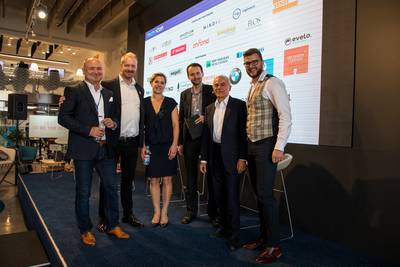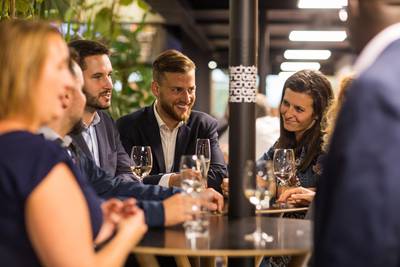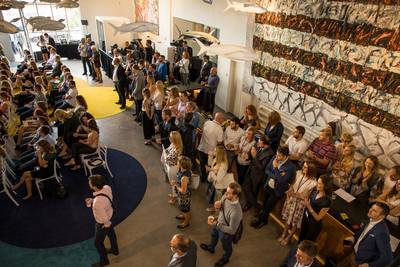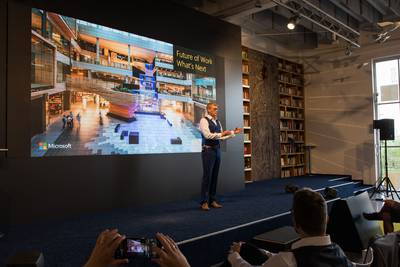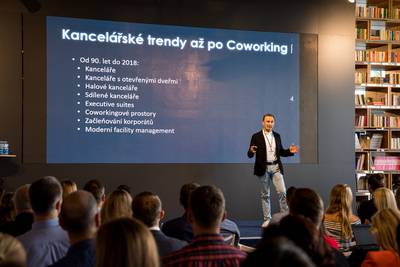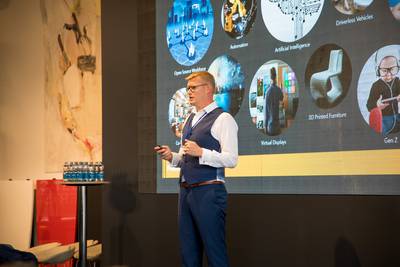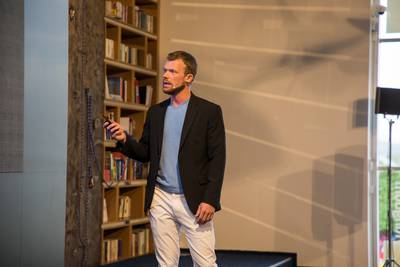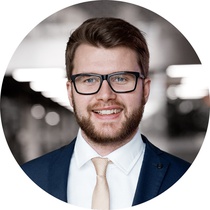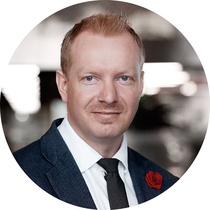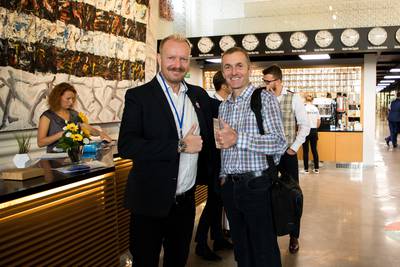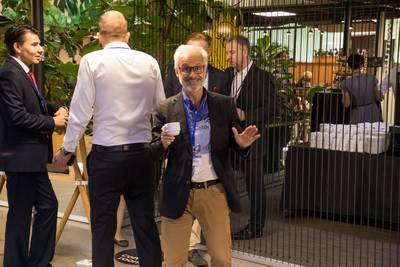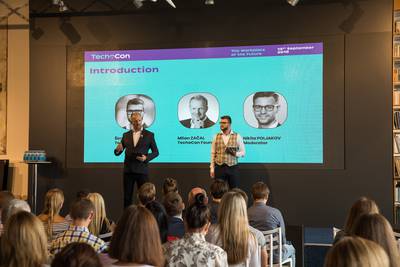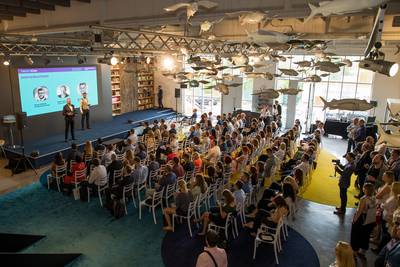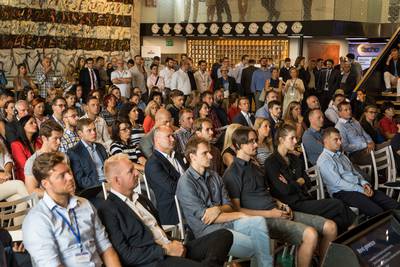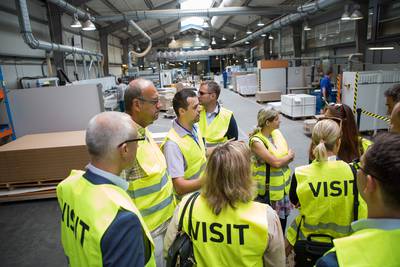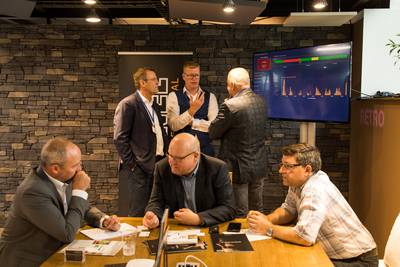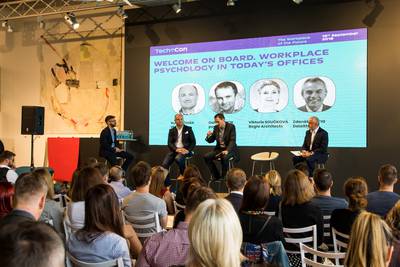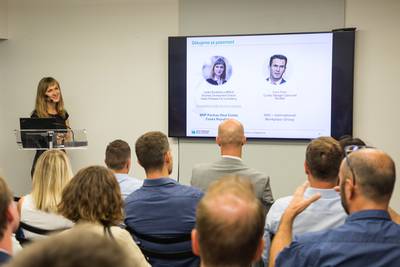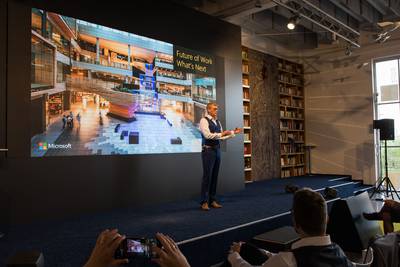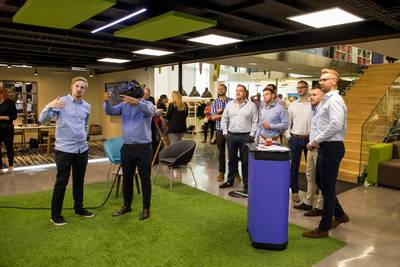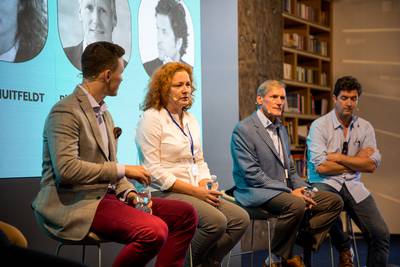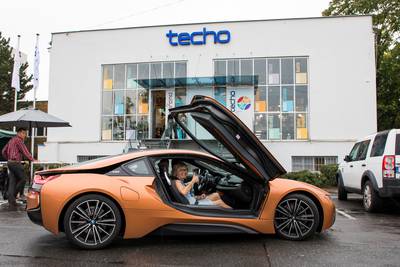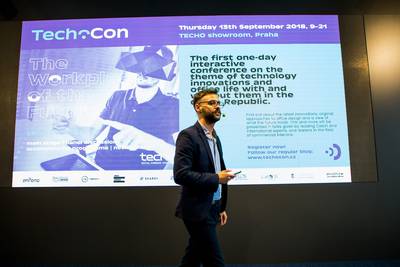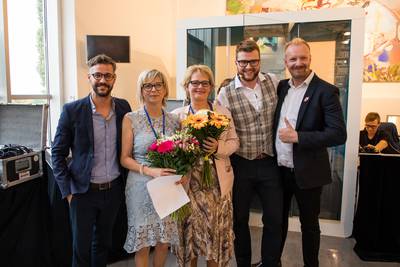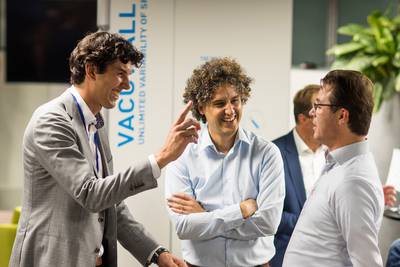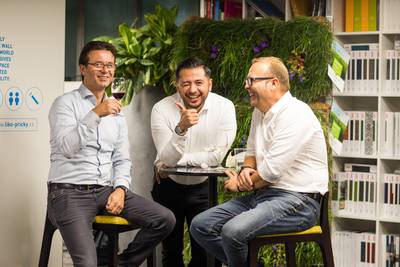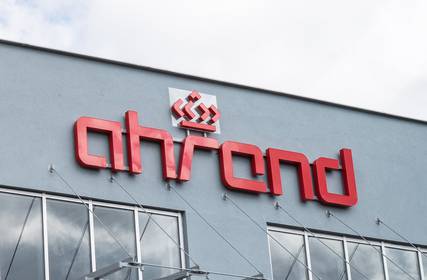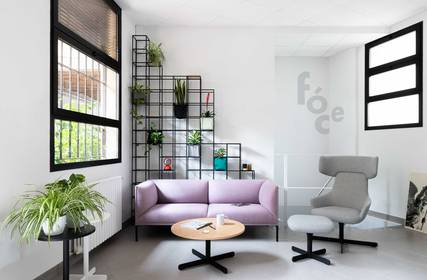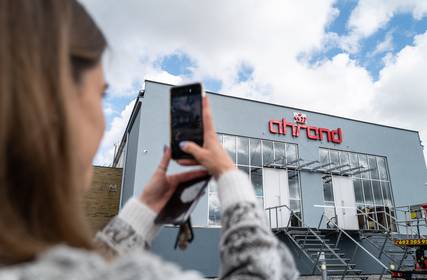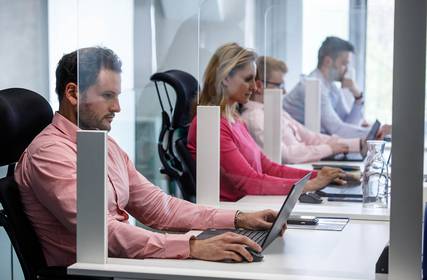The second annual conference devoted to the future of the workplace environment was a success. The day at the TECHO showroom in Prague was devoted to new technologies and innovations. This year’s conference focused on life and work in coworking environments, a topical theme that we hear discussed at every turn – in small start-ups and international corporations.
The trend is very much on the up. Thanks to technology developments in recent years, people have radically changed their approach to work. The structure and organisation of work teams is changing, and there has been a transformation in office layouts. Studies indicate that by the end of 2018, 1.7 million people around the world will be working in a coworking environment at 19,000 coworking centres, and it is on the rise in the Czech Republic too. In Prague alone there are now dozens of coworking centres and new ones are springing up in other towns too. How is this trend reflected in our future offices, and what should we prepare for?
Coworking in the Czech Republic
Coworking in the Czech Republic started in 2009, somewhat later than in the rest of Europe and elsewhere in the world. Over the past eight years this sector has boomed, both in terms of the number of centres and total area.
Today in the Czech Republic we can count a total of 61 coworking centres, and it is possible that since writing this (August 2018) this total has further increased. The phenomenon of cooperation and shared workspace has also spread to other towns in the country: it is directly connected with qualified workforce, student population and also a strong IT background.
After opening a centre in Prague, Impact Hub in Brno opened the largest coworking centre in Europe (3400 m2). Node5 opened a 750 m2 coworking centre in Ústí nad Labem in 2017. Other large players are assessing the Czech market with an eye to further expansion. In short, the market is changing and growing dynamically.
What can we expect in following years?
Lenka Šindelářová, business development director and head of Research & Consultancy at BNP Paribas Real Estate, spoke to the conference to forecast future trends. According to a study that the firm prepared for the Czech Republic, future development can be expected to follow roughly the following three directions.
1.
Specialisation
According to the BNP Paribas study, new coworking operators will in the future focus on individual areas of specialisation. Centres will spring up just for the creative industry, for designers and architects. Centres specifically for IT and technology start-ups will also be established. We can also expect hubs for artists combining offices with exhibition space.
2.
Professionalism
The entry of international players to the Czech market is resulting in the closure of some weak operators, but the result is better quality services within the sector as a whole. For users thus means a new offer of services, which will typically include, for example, accounting and associated consultancy and training.
3.
Integration
In the future we will be witness to a greater interconnection between associated segments. The range of events will increase (seminars, conferences, workshops), which will become an interesting source of revenue. Linked to this will be the potential rental of AV equipment and provision of catering services. A large role will be played by digitisation, which will make it easier to use the individual services – e.g. online reservation etc.
What could be seen and heard at the second annual conference
Speakers and contributors at TechoCon 2018 included architects, designers, people directly creating and using office space. We also invited experts from fields not directly associated with designing office space: psychology, behaviour research, analysis connected with space and human behaviour.
Keynote speakers on the main stage were Lubomír Šilhavý, founder of WorkLounge, Doug Lowrie, Workplace Advantage Product Manager at Microsoft, and the evening talk by Chris Cooley of American agency Evelo dealing with coworking. An extensive programme could also be enjoyed on the satellite stage, which was devoted to the miniworkshops of individual exhibitors.
Coworking. What awaits us?
Lubomír Šilhavý, WorkLounge
According to the founder of WorkLounge, many investors have succumbed to the modern trend with the promise of high profits. Converting office space to coworking opens up the possibility of tripling revenues. However, according to available information the fact is that 60% of all coworking places are unprofitable. In Šilhavý’s opinion, the reason for this is a lack of experience with coworking operations and a lack of qualified personnel. In the future we will have, according to Šilhavý, to prepare for the arrival of office chains in the market in the same way as international chains started to dominate the hotel segment in the 1960s.
Transform disturbances into opportunities
Doug Lowrie, Microsoft
Microsoft has for a long time promoted work independent of a fixed workstation. Their office layout also promotes this, and is one of the most modern in the country. Dough Lowrie is responsible for the strategy applied across the globe when designing the offices of this American software firm. In his words, there are two important aspects for the working environment – the technology that increases work performance, but often disturbs employees, and emphasis on user-centred solutions – a flexible working environment and associated services and administration.
"When designing the work environment of the future we must accept a degree of uncertainty and transform disturbing elements into opportunities," says Doug, who then emphasises that in the case of offices it is always necessary to keep some divided space for various situations.
The new face of the global work environment
Chris Cooley, Evelo
According to Chris Cooley it is necessary to look at coworking as a specific community of people who achieve greater productivity and cooperation thanks to the fact they use a perfectly equipped and flexible workspace. He added that coworking has the potential to better promote a sense of belonging, but when introducing open-plan office space a certain degree of caution is always advisable. It is not necessary to follow every trend. The office market is, according to Chris, currently shifting from a "suite" style, the aim of which is to maintain status, to a platform that is client oriented. This has as a consequence a greater service space and the establishment of functional workplace that provides maximum support for cooperation between individual members.
What was said in the panel discussions?
The psychology of work in offices of the future.
What contributes to an optimum work environment and how do you satisfy the divergent requirements of its users? This was the theme discussed by experts from various fields – e.g. a psychologist, an architect and a representative of consultancy firm Deloitte. The conversation covered the relationship between an individual, his team and the common work area. Satisfying the often contradictory requirements and demands is a major task that every company faces today. With regard to efforts to attract the best people, these firms must know how to correctly interpret the individual requirements of future employees. Every company owner should therefore continually ask the following questions: What people do I need in my company? What influences them? How do I recruit them? What keeps them at the company? How will I develop them? Answers to these questions can provide guidance when designing office space.
Panellists: Zdeněk Lustig (Deloitte), Rudolf Čihák (IdeaSense), Dalibor Špok (psychologist and publicist), Viktorie Souckova (Bogle Architects)
All technology has a common target. People.
Over a relatively short time smartphones have fundamentally changed our ways of working and have brought with them new workplace requirements. According to certain experts, in 20 years we will become robots. To start with just mentally. People will have chips implanted to make them smarter. Technology will play a key role and the trends that we see today will accelerate. As an example we can take the recently completed project Spark in Warsaw. In the building it proved possible to integrate ten different systems, from contactless access to the building to monitoring carpark occupancy. We can see that such synergies are truly beneficial when they come at the right time and in a suitable form. As we know from a few recent cases, such efforts are not always successful. Technology primarily provides assistance. It is up to people how they accept it and are able to work with it.
Panellists: Josef Šachta (Sharry Europe), Lukáš Balík (Spaceflow), Jiří Šimonek (DAP Services), Roel Geenen (Veldhoen + Company), Bert Hesselink (CBRE)
What new forms of organisation come with coworking?
The sharing of knowledge is one of the most important benefits of coworking. Sharing is an important condition for innovation and progress. Coworking results in a more pleasant environment in which cooperation and new ideas thrive. A successful example is Bogle Architects, where each architect has his/her own workplace, but the conceptual part of the design process takes place at a desk at which architects work together. Does coworking have any negative side? As mentioned during the panel discussion, if the workplace is set up properly, and has a good vision, then there are almost no minuses. Every project should be preceded by a thorough analysis – market positioning, work with the community, degree of privacy, location selection etc.
Panellists: Carsten Svensson (Ecophon), Ian Bogle (Bogle Architects), Billy Rue (Evelo), Martina Huitfeldt (Notino), Jan Musil (LIKO-S)
Do you want to learn more?
For more information visit the conference website.
Techocon website
